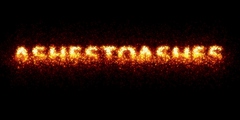Color Temperature
This discussion is connected to the gimp-docs-list.gnome.org mailing list which is provided by the GIMP developers and not related to gimpusers.com.
This is a read-only list on gimpusers.com so this discussion thread is read-only, too.
| Color Temperature | Julien Hardelin | 07 Jul 18:25 |
| Color Temperature | Elle Stone | 07 Jul 18:45 |
| Color Temperature | Elle Stone | 07 Jul 20:33 |
| Color Temperature | Liam R. E. Quin | 07 Jul 18:56 |
| Color Temperature | Julien Hardelin | 08 Jul 05:40 |
Color Temperature
Hi all,
I don't understand why we can change the original temperature in colors/Color Temperature. If this is the color temperature of the light source the image was taken with, it should be a fixed value that can't be changed.
Julien
Color Temperature
On 07/07/2018 02:25 PM, Julien Hardelin wrote:
Hi all,
I don't understand why we can change the original temperature in colors/Color Temperature. If this is the color temperature of the light source the image was taken with, it should be a fixed value that can't be changed.
Hi Julien,
I don't think "What color temperature was the original image" is a well-defined question. If the image was color-balanced by making a neutral object in the image read as neutral, at least in ICC profile software the color temperature of the image is now D50, as the original color cast from whatever light was actually used, has been color-balanced away. But maybe the user actually color-balanced to retain the impression of the color of light in the scene, for example capturing the colors of the sunset instead of white-balancing them away, or to impart a creative look via color-balancing.
Anyway, as long as the user dials in the same starting temperature for the Original and Intended temperature, the result is "no change". But for any given amount of change, the resulting color depends on the starting color.
For example, let's say the user wants to lower the temp by 2000. Starting from 6500 and lowering to 5500 produces a different result than starting from 5000 and lowering to 3000. Which results are "the right" results is basically an aesthetic judgement call.
If the user has something more precise in mind (like actually replicating a color change based on changing "colors of the light"), they'd be better off using RawTherapee's totally awesome CIECAM02 model.
Best, Elle
Julien
_______________________________________________ gimp-docs-list mailing list
gimp-docs-list@gnome.org
https://mail.gnome.org/mailman/listinfo/gimp-docs-list
https://ninedegreesbelow.com Color management and free/libre photography
Color Temperature
On Sat, 2018-07-07 at 20:25 +0200, Julien Hardelin wrote:
Hi all,
I don't understand why we can change the original temperature in colors/Color Temperature. If this is the color temperature of the light source the image was taken with, it should be a fixed value that can't be changed.
Historically it is, but the image doesn't necessarily encode that information correctly or at all (and you might or might not have measured it).
In addition there's often a mix of light sources (a window, a fill-in flash, a pile of burning organic fair-trade bamboo wood harvested under a full moon)...
but above all else you can get interesting creative effects by changing it :)
Color Temperature
On 07/07/2018 02:45 PM, Elle Stone wrote:
I don't think "What color temperature was the original image" is a well-defined question. If the image was color-balanced by making a neutral object in the image read as neutral, at least in ICC profile software the color temperature of the image is now D50, as the original color cast from whatever light was actually used, has been color-balanced away. But maybe the user actually color-balanced to retain the impression of the color of light in the scene, for example capturing the colors of the sunset instead of white-balancing them away, or to impart a creative look via color-balancing.
Also there's the question of what color balance was set in the camera, if the user was shooting jpegs. If the camera was on auto white balance, who knows how accurately the image was color-balanced. If on some other setting, who know how accurately that setting reflected the actual light source.
And if the user was shooting raw, each raw processor has different temp/tint numbers for different presets such as Daylight, Incandescent, and so forth, and if using "in camera" white balance, the same questions as apply to jpegs, also applies to raw files.
Also GIMP doesn't provide "tint" settings, so there's only so much GIMP's "Color Temperature" sliders can do. Plus AFAIK GIMP's color temperature code is table-based, and personally I don't have a clue how table was derived or how accurate it is over what range, or whether/how well it applies to color spaces other than sRGB.
Nonetheless GIMP's Color Temperature results are often pleasing and believable, even though it's a big guessing game as to what "should" be the input temp for any given image.
Best, Elle
https://ninedegreesbelow.com Color management and free/libre photography
Color Temperature
Thank you for your answer. It's clear now.
Julien
Le 07/07/2018 à 20:56, Liam R. E. Quin a écrit :
On Sat, 2018-07-07 at 20:25 +0200, Julien Hardelin wrote:
Hi all,
I don't understand why we can change the original temperature in colors/Color Temperature. If this is the color temperature of the light source the image was taken with, it should be a fixed value that can't be changed.
Historically it is, but the image doesn't necessarily encode that information correctly or at all (and you might or might not have measured it).
In addition there's often a mix of light sources (a window, a fill-in flash, a pile of burning organic fair-trade bamboo wood harvested under a full moon)...
but above all else you can get interesting creative effects by changing it :)











